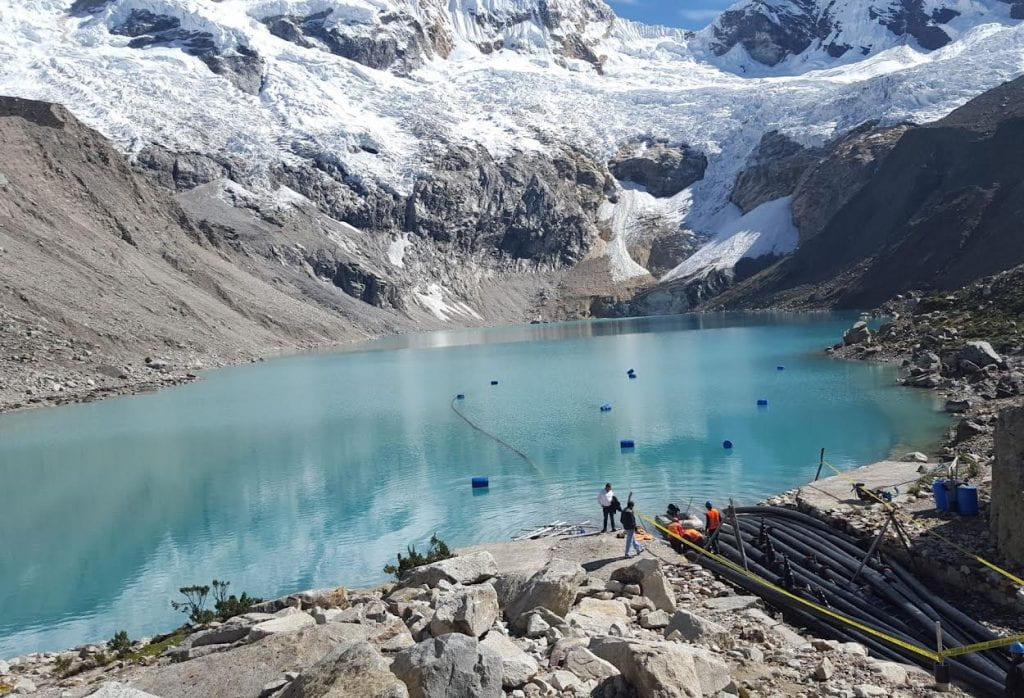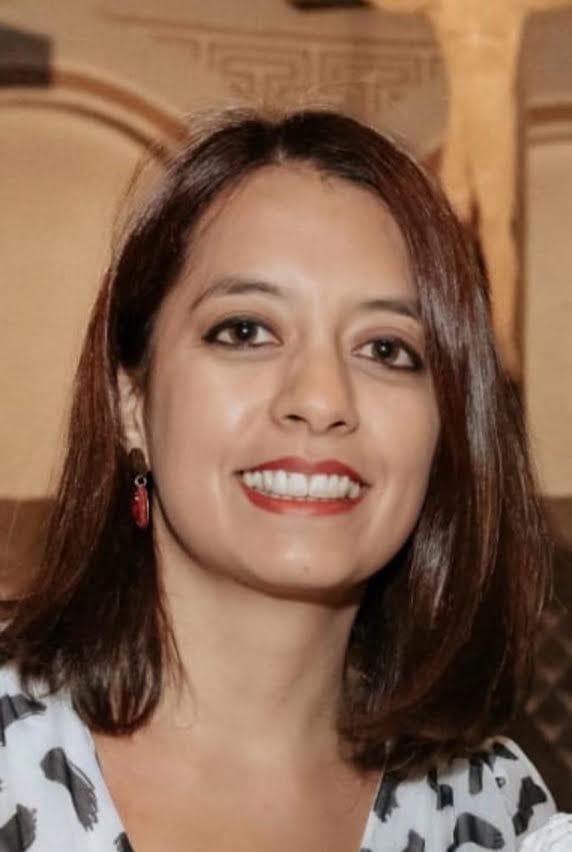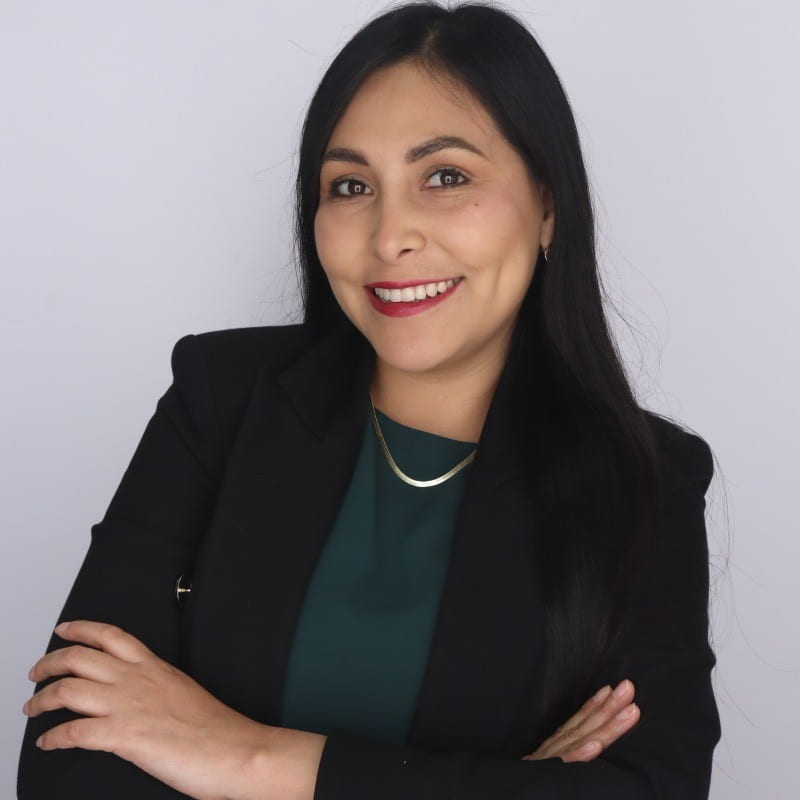By Fiorella Valladares Meneses

Photo credit: INDECI
Climate change is one of the most pressing and complex challenges of our time, affecting people and ecosystems around the world. As the impacts of climate change become increasingly apparent, individuals and organizations are turning to legal action as a means of promoting environmental justice.
One of the most notable examples of this trend is the case of Saul Luciano Lliuya v. RWE, a landmark case currently pending in Germany that could have far-reaching implications for climate litigation worldwide. This article explores the intricacies of Saul’s case and the legal strategies employed by his legal defense team.
In an interview with Andrea Tang,1 an experienced lawyer and environmental advocate who is deeply involved in Saul’s case, we explore the legal strategies in the case, the obstacles that must be overcome to prevail, and the case’s broader implications for global climate litigation.
Following the first interview with Saul Lliuya, published in this blog, this interview examines the potential civil liability arising from climate change and the innovative application of climate science to support the legal arguments.
Where are you working, and how did you get involved in Saul’s case?
I am working as an external consultant for Germanwatch in Lima, Peru. I started as a volunteer and then work became more intense. Because of that, I left my teaching jobs on environmental legislation at the Universidad Científica del Sur and the Universidad Agraria, and I joined the Germanwatch team.
When you entered Germanwatch, was this organization already dealing with Saul’s case, or was that later?
I only joined three years ago. This case dates back to 2015, when the lawsuit was dismissed. Germanwatch and Saul appealed to the Higher Regional Court of Hamm. And that’s when the Court accepted the case, and the process began in 2017. In 2019, the judges and experts planned to visit Peru to see the evidence, such as the risk of flooding and destruction of Saul’s house because of his proximity to Palcacocha, a glacier lake in the Andes mountains, and to learn how Saul’s house was built and about its current condition. Judges of the Higher Regional Court of Hamm (Germany), legal advisors, and experts came to Huaraz and conducted an on-site test study to assist in the process and determine whether there was an imminent risk to Saul’s house, which was necessary for the court to have jurisdiction to hear the case. As a legal strategy, the lawsuit was filed under Article § 1004 of the German Civil Code (BGB), which states that if there is interference with property, a party had a right to request that the interference cease, meaning the law regulates the relationship between neighbors.
Then the case stalled for quite some time because of the COVID pandemic. It resumed in 2022. It is exciting that the case is continuing because Saul Lliuya, the plaintiff, wants courts to reconsider the applicability of this article of the Civil Code, which applies to adjacent neighbors, and apply it to support a concept of “global neighborhood.” So, if you carry out an activity in a country like Germany, but your activities have consequences elsewhere in the world, as is the case with the Palcacocha Lake in Peru, an accountability link can be established without geographical limits. In Saul’s case, he asserts that his house can be damaged or destroyed as a consequence of the blocks of ice that will fall into the lake, causing a wave that will lead to overflow and flooding, which is a consequence of deglaciation induced by climate change.2 The lawsuit is based on the study “Tracing anthropogenic carbon dioxide and methane emissions to fossil fuel and cement producers, 1854–2010”.3 In this study, RWE, the German energy company that has allegedly contributed to climate change in the Andes, ranks number 11 on the list of major emitters.
I’m curious to know if it is typical for judges or the court to conduct on-site visits in foreign countries to verify that there is an impact or imminent risk.
No, that’s why it is a landmark lawsuit. It had never happened before that a lawsuit reached this stage in a climate litigation process to involve an on-site test study. Three judges from the Court traveled with their experts to Peru. There was also a lot of media around during that visit. So, this case is important given that the Court admitted the lawsuit, and that the case has reached the evidence stage. It is a significant lawsuit. Hopefully, it will succeed, but even if not, a lot has already been achieved.
I understand that focusing on the civil lawsuit seeks to obtain compensation and indemnification. Does liability mean, in this case, that there is a causal link between RWE’s conduct and climate change?
Yes, although the claim is modest, it’s around $20,000 because the study concluded that RWE is responsible for 0.47% of global industrial greenhouse gas emissions since the beginning of industrialization. That amount will cover part of the costs of local flood defenses associated with disaster response. I understand it is a symbolic amount, and for a company like RWE, it means nothing. RWE has probably spent a lot on lawyers, but the most important thing is that this case could set a precedent that paves the way for companies, like RWE, to be held responsible and accountable for their actions. With the help of climate attribution science, an extreme weather event caused by climate change can be attributed to the major emitters.
From what I had noticed in the news, the expert’s opinion was supposed to come out in July of last year. Did the expert opinion finally come out? What did it find?
The expert’s opinion will be helpful in deciding whether Saul’s house is at risk of being affected by a potential glacial lake outburst flood from Palcacocha Lake. The expert opinion, though not publicly available, was delivered to Germanwatch in November 2023. Although I haven’t seen the expert´s report myself, there is another group in Germanwatch that is conducting the analysis and will respond to this opinion, making clarifications and observations to that report.
You mentioned that, in the event of a favorable ruling, the percentage of responsibility that RWE will assume is small compared to what is really required for the construction of the dike structures. In that regard, are you planning to involve the regional or national government?
That’s another issue we are working on in parallel. We want to involve the government. In fact, more than five years ago, construction of a dike or protective wall was proposed, but it was supposed to be paid for by the Ancash regional government. However, due to the pandemic, everything was put on hold, and the proposal was denied because the regional government said they had other priorities to address during the pandemic. We want to reactivate this process, but separate from the lawsuit and its outcome.
Do you think this case is setting a precedent that could be replicated in other cases in Peru and around the world?
Other strategic climate lawsuits are very important. There is one happening right now involving a cement company from Switzerland. The plaintiffs are from an island in Indonesia, suing a cement company, which is also categorized as a significant emitter of greenhouse gases. So, these lawsuits are transnational, which would seem to be the new trend. It can’t even be said to be international law because the case is litigated under national law, but the plaintiffs are not in the same space, so that is why it is transnational.
But as climate change lawsuits gain more support, they will become easier to resolve. And I also believe there will be more specialization in climate change issues in national courts. I think the most crucial aspects are: how this claim will be resolved, the specialization in this type of litigation that will follow, and understanding the science that underlies this issue. In this case, science is our best support. Without science, our lawsuits would have no basis.
Takeaways:
From the interview, we are sure that while the case of Saul Luciano Lliuya v. RWE undoubtedly represents a significant milestone in climate litigation, it also raises important questions that warrant careful consideration. While the legal strategies employed by Saul’s legal team are innovative, there remain challenges regarding the establishment of a causal link between RWE’s actions and the harm suffered by Saul.
The complexity of climate science and the inherent uncertainties involved in attributing individual events to broader patterns of climate change present formidable obstacles in the courtroom. Despite advancements in scientific understanding, there is still considerable debate and disagreement among experts regarding the precise mechanisms by which greenhouse gas emissions contribute to specific environmental impacts.
Judges’ preparation and specialization will be crucial for them to understand beyond the law. Interdisciplinary cooperation between lawyers and scientists is essential to ensure that the courts have the information they need to make informed decisions.
Additionally, the reliance on civil liability frameworks, while innovative, may overlook broader issues of distributive justice and the responsibilities of governments and international institutions in addressing climate change. While important for affected individuals like Saul, seeking compensation through civil litigation should not overshadow the need for comprehensive policy measures and international cooperation to mitigate and adapt to climate change on a global scale.
Finally, as we continue to navigate the evolving landscape of climate litigation, it is important to remain vigilant in the pursuit of justice while also acknowledging the inherent uncertainties and limitations of the legal system in addressing the multifaceted challenges of climate change.

1 Andrea Tang Valdez is a lawyer based in Lima, Peru. Ms. Tang has more than ten years of experience in environmental law with an emphasis on industry and specialization in solid waste. She is a former Fellow in the Environmental Sustainability Professional Fellowship Program of the U.S. Department of State. Currently, she is the Deputy Director of a non-profit association dedicated to the management and handling of waste of electronic equipment.
2 Marcelo A. Somos-Valenzuela et al., Modeling a glacial lake outburst flood process chain: The case of lake palcacocha and Huaraz, Peru, 20 Hydrology and Earth System Sciences 2519–2543 (2016),
3 Richard Heede, Tracing anthropogenic carbon dioxide and methane emissions to fossil fuel and cement producers, 1854–2010, 122 Climatic Change 229–241 (2013).

Fiorella Valladares Meneses
LLM in Environmental & Energy Law from The George Washington University, with over a decade of extensive experience in the domains of energy, environmental, and indigenous regulation


